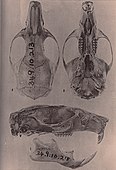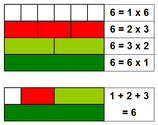Wikipedia:Main Page history/2022 January 7
From today's featured articleHammond's rice rat (Mindomys hammondi), also known as Hammond's oryzomys, is a species of rodent in the tribe Oryzomyini of family Cricetidae. Formerly considered to be related with Nectomys, Sigmodontomys, Megalomys, or Oryzomys, it is now placed in its own genus, Mindomys, but its relationships remain obscure; some evidence supports a placement near Oecomys or as a basal member of Oryzomyini. Mindomys hammondi is known only from Ecuador, where it occurs in montane forest; a record from the Amazon basin lowlands is dubious. Reportedly, it lives on the ground and is associated with water; others suggest it lives in trees. A large, long-tailed, and long-whiskered rat, its fur is buff above and abruptly lighter below. The front part of the skull (rostrum) is heavily built. The species is named after the collector who first found it, Gilbert Hammond. He supplied natural history specimens to Oldfield Thomas and others. (Full article...) Did you know ...
|
In the news Protests in Aktobe
On this dayJanuary 7: Christmas (Eastern Christianity); Victory over Genocide Day in Cambodia (1979); Flag Day in Italy (1797)
|
From today's featured list
Mersenne primes and perfect numbers are two deeply interlinked types of natural numbers in number theory. Mersenne primes, named after the friar Marin Mersenne, are prime numbers that can be expressed as 2p − 1 for some positive integer p. For example, 3 is a Mersenne prime as it is a prime number and is expressible as 22 − 1. Perfect numbers are natural numbers that equal the sum of their positive proper divisors (all divisors excluding the number itself). There is a one-to-one correspondence between the Mersenne primes and the even perfect numbers. This is due to the Euclid–Euler theorem, partially proved by Euclid and completed by Leonhard Euler: even numbers are perfect if and only if they can be expressed in the form 2p − 1 × (2p − 1), where 2p − 1 is a Mersenne prime. (Full list...)
Today's featured picture

|
This historical coat of arms of Illinois is an illustration from State Arms of the Union by Henry Mitchell, published by Louis Prang in 1876. It depicts a bald eagle perched on a rock carrying a shield with the stars and stripes. In the eagle's beak there is a banner with the state motto, "State Sovereignty, National Union." Illustration credit: Henry Mitchell; restored by Andrew Shiva
Recently featured:
|
Other areas of Wikipedia
- Community portal – Bulletin board, projects, resources and activities covering a wide range of Wikipedia areas.
- Help desk – Ask questions about using Wikipedia.
- Reference desk – Serving as virtual librarians, Wikipedia volunteers tackle your questions on a wide range of subjects.
- Site news – Announcements, updates, articles and press releases on Wikipedia and the Wikimedia Foundation.
- Teahouse – To ask your first basic questions about contributing to Wikipedia.
- Village pump – For discussions about Wikipedia itself, including areas for technical issues and policies.
Wikipedia's sister projects
Wikipedia is hosted by the Wikimedia Foundation, a non-profit organization that also hosts a range of other projects:
-
Commons
Free media repository -
MediaWiki
Wiki software development -
Meta-Wiki
Wikimedia project coordination -
Wikibooks
Free textbooks and manuals -
Wikidata
Free knowledge base -
Wikinews
Free-content news -
Wikiquote
Collection of quotations -
Wikisource
Free-content library -
Wikispecies
Directory of species -
Wikiversity
Free learning tools -
Wikivoyage
Free travel guide -
Wiktionary
Dictionary and thesaurus
Wikipedia languages
This Wikipedia is written in English. Many other Wikipedias are available; some of the largest are listed below.
-
1,000,000+ articles
-
250,000+ articles
-
50,000+ articles




